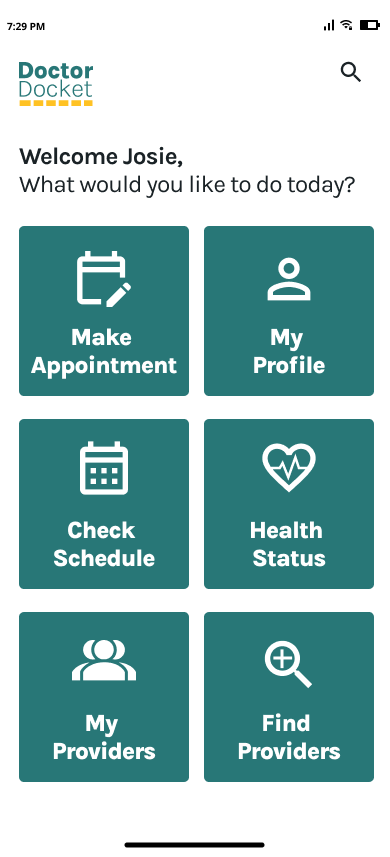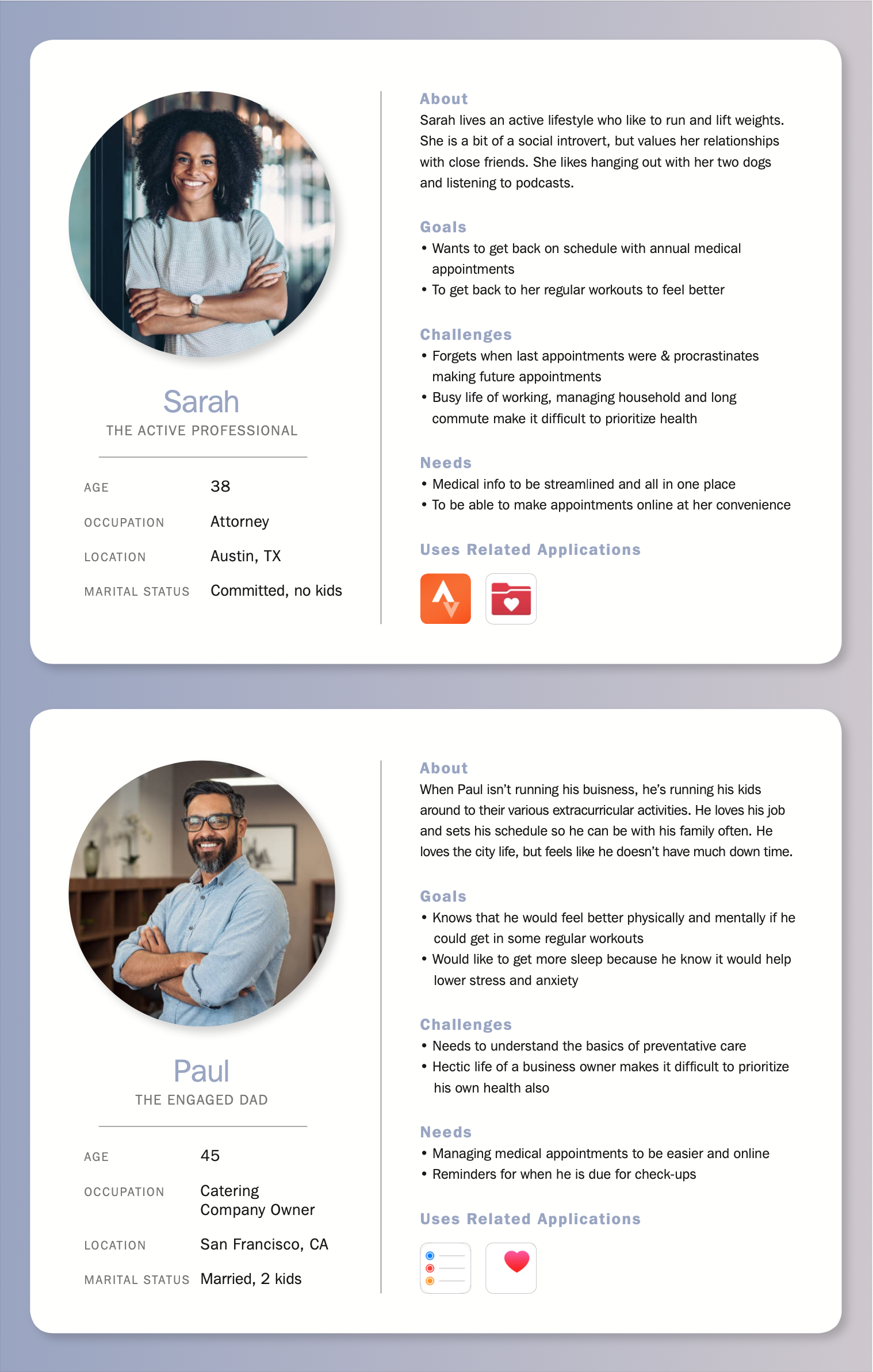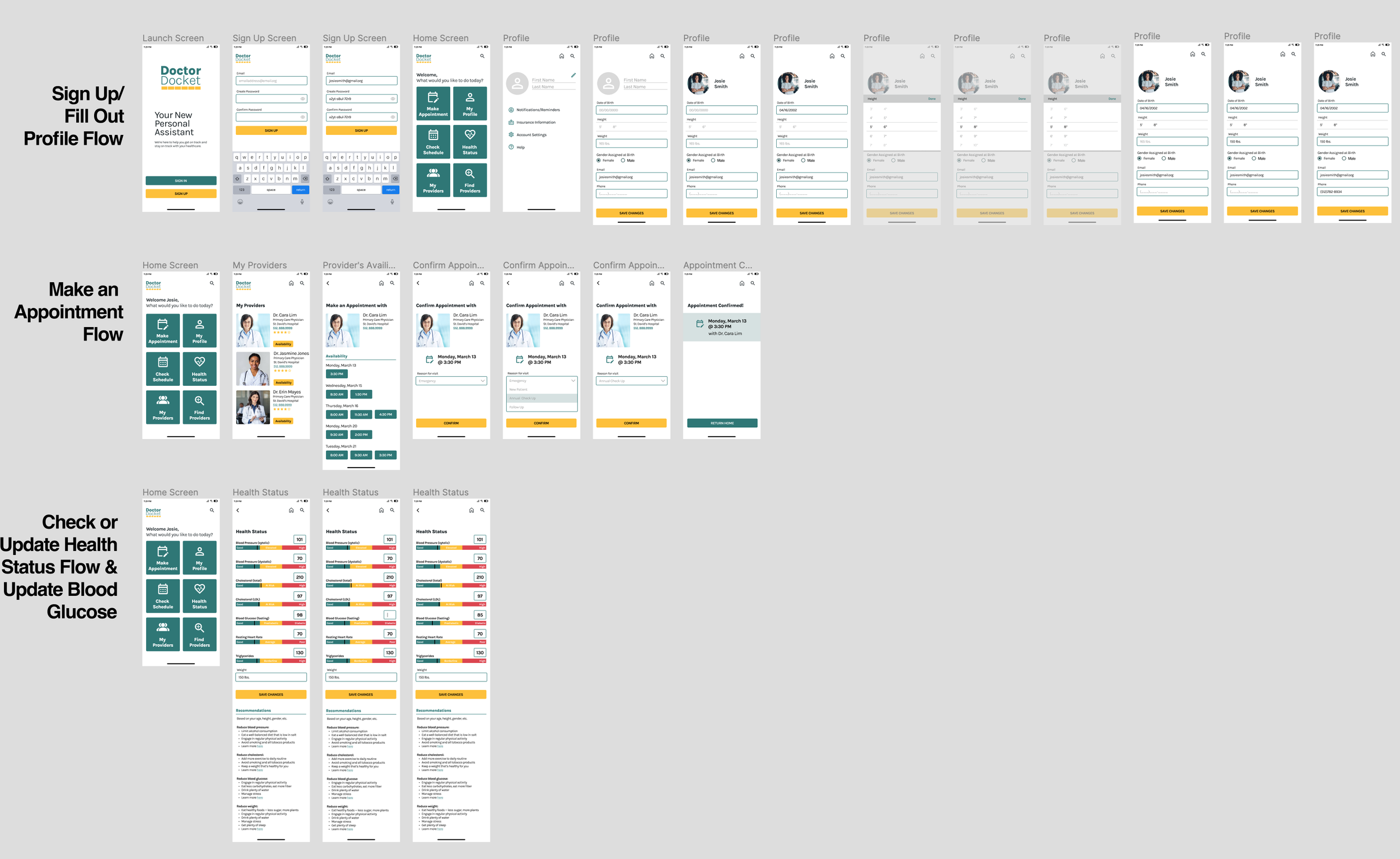Doctor Docket
A tool to empower people to be proactive with their health while creating positive habits. Doctor Docket is an organizational tool that allows the user to make and keep track of their medical appointments. Taking into account the users’ age and current health it shows recommended appointments and health goals. Doctor Docket also stores your provider and insurance info and sends reminders for upcoming and suggested appointments.
CONTEXT
Human bodies are not adapted to modern life as we know it. Activities such as sitting or looking at screens all day, not managing stress, not exercising, overeating and drinking are creating health issues that are preventable. The healthcare system is expensive and dealing with illness takes people away from life.
People are overwhelmed with work, family and responsibilities that they are overlooking their own health. Basic preventative care falls behind because if there is no current problem, nothing needs to be fixed. But, if people don’t make time for their wellness, they will be forced to make time for their illness.
PROBLEM
Discovery
RESEARCH OBJECTIVES
Determine what methods people are currently using or interested in for preventative care.
Understand difficulties, failures and successes in previous attempts to stay on top of preventative care.
Understand how preventative habits can fit into daily life.
Discover any tools previously used and what were the outcomes.
USER PERSONAS
I created these friends to help build empathy and understanding with the end user. By trying to understand the users’ needs, experiences, behaviors and goals, I can make sure that the product is truly user centric designed.
PRIMARY RESEARCH
I made a plan to talk to real people and get to the heart of why so many people don’t engage in preventative care. (I was assuming this, but found out it was true!) I interviewed people who could be potential users. Then I used affinity mapping to extract insights and find themes. Nearly all interviewees had fallen off of their regularly scheduled preventative care appointments. A common reason was forgetting or not having time to make the appointments and that reminders would be helpful.
PROJECT GOALS
After analyzing the data from my user interviews and market research, I came up with user goals and business goals and discovered which of these overlapped. In the end, both groups want to help users become healthier and happier though an easy to use tool.
Ideation & Development
USER & TASK FLOWS
I was able to discover the most efficient paths for the user by creating, testing and reworking task flows for a chosen set of common tasks.
MID-FIDELITY WIREFRAMES
After some super quick lo-fi wireframes I dove into mid-fi wireframes and realized that I needed way more frames than I thought to realistically get through important task flows.
PROTOTYPE CREATION
At last — bringing this project to life with a prototype!
After testing the prototype myself and fixing any errors, I tested it on 5 potential users. Though the users had slightly different experiences, they all struggled with the same elements: the scroll wheel for adding their height and the edit icon on the profile. Also, because it was their first time using this site, they hadn’t figured out that one of the tasks started with a shortcut. The shortcut was something that they’d have to learn with repeated use.
After analyzing test results, it was easy to prioritize which revisions would have the most impact.
HIGH-FIDELITY WIREFRAMES
Creating a component library full of user friendly parts and pieces focused on accessibility was the fun part. Seeing them come together in high-fi wireframes was a lesson on how to guide the users’ eye and ease through each step.
NEED TO FIGURE OUT HOW TO EMBED A WORKING PROTOTYPE
Conclusions
WHAT WENT WELL?
WHAT COULD BE IMPROVED?
WHAT NEXT?
NEED TO REWRITE ALL OF THIS
This phase was a very thorough dive into what UX design consists of. I enjoyed all of the research that drives the concept and design of the actual product.
I could improve my process by realizing that everything can and probably will be iterated. So, I wouldn’t stress so much about things being perfect and slowing me down. I also felt like I needed to read and understand everything about each step before I did it, but there’s just way too much to read out there for that to be feasible.
I really started to lose the passion that I had about this project as I kept falling behind. I need to revisit why I was passionate about this topic in the first place and figure out how to translate that into this project.








